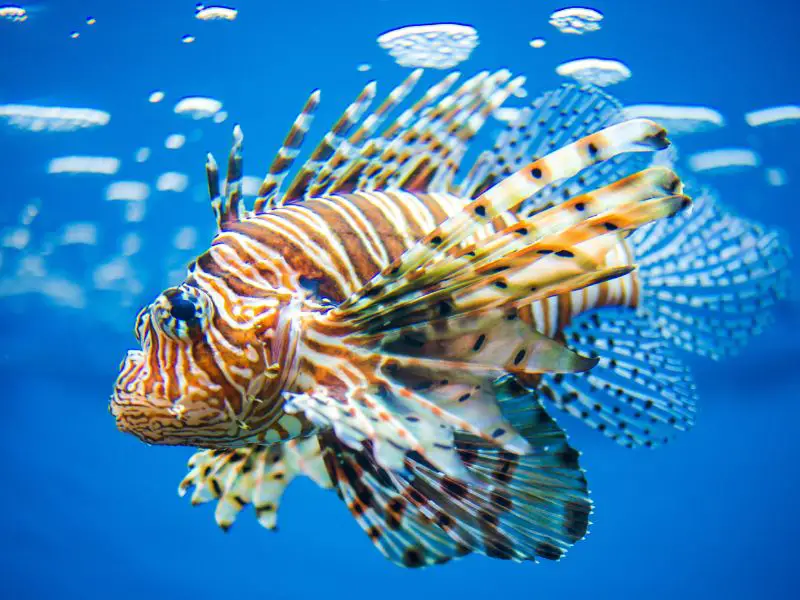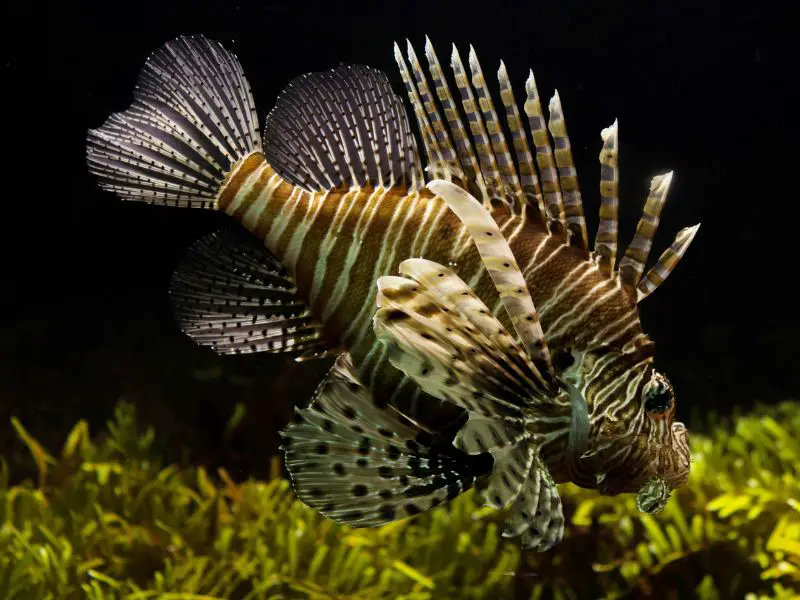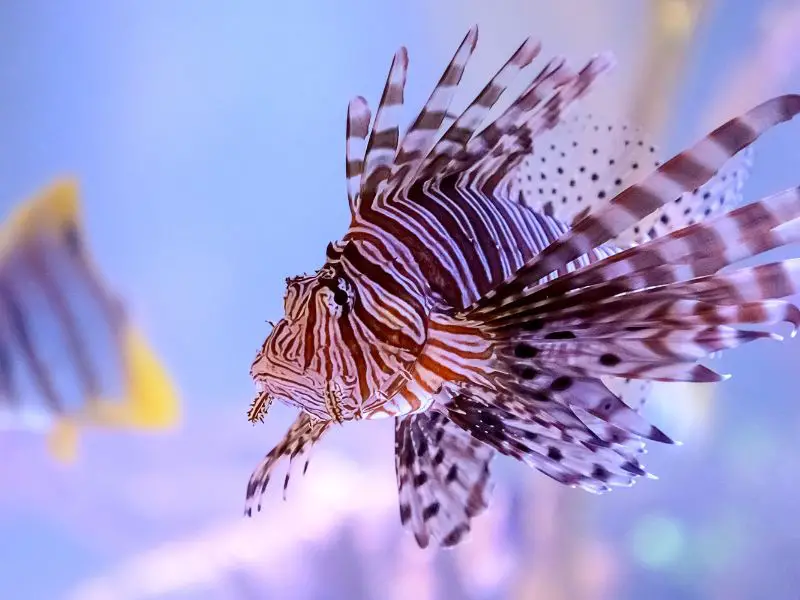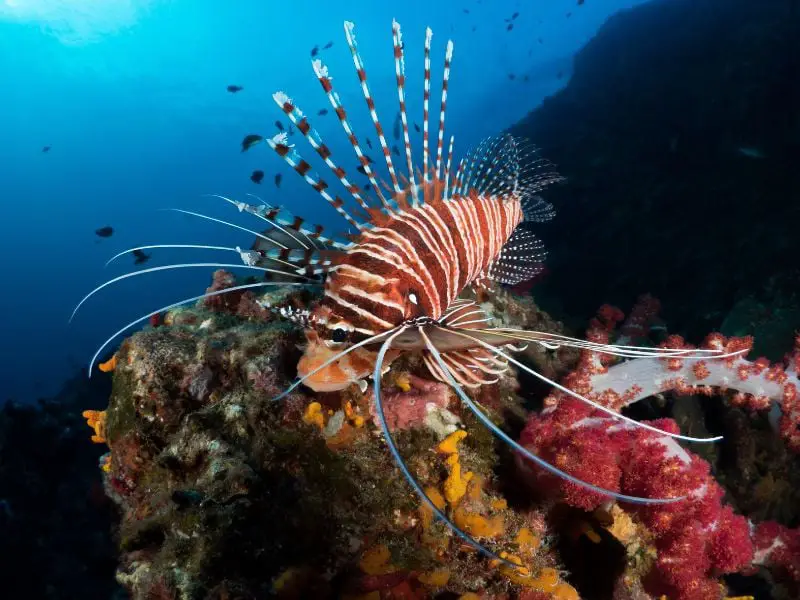The lionfish has become the face of invasive species problems in the western North Atlantic and Caribbean. Its reputation as invasive species is comparable to zebra mussels, snakeheads, and even Asian carp. Their numbers continue to grow, posing a danger to coral reefs and other marine ecosystems.
NOAA and its partners are working diligently to find methods for preventing additional population growth and managing current populations. This article looks at the history of lionfish, its consequences, its characteristics, and ways to fight the invasion.
The History
The name “lionfish” refers to two invasive species that are closely related and practically identical. Lionfish are from the Indo-Pacific, but they were first seen off the coast of Florida in the mid-1980s. In the past 15 years, their populations have grown very quickly. Since lionfish are popular with aquarium keepers, some owners may have released them in the wild. In the warm ocean waters of the Atlantic, lionfish now live in reefs, shipwrecks, and other places.

Consequences to Native Fish and Coral Reefs
The lionfish threaten native fish populations by preying on them in their juvenile stages. This threatens the coral reef ecosystem, as it affects the food chain for reef inhabitants. In addition, lionfish feed on the eggs of native fish, which makes it difficult for them to reproduce and grow. As a result, the coral reef ecosystem is affected, and the existence of native species is in danger.
As lionfish populations increase, they place a more significant burden on coral reefs. For instance, lionfish consume herbivores, whereas herbivores consume coral reef algae. Without herbivores, unregulated algae development may harm coral reefs’ health.
These reefs are already threatened by climate change, pollution, illness, overfishing, sedimentation, and other factors. This has resulted in enlisting seven coral species in the region affected by lionfish. Adult lionfish also have very few natural predators in their range.

Characteristics of Lionfish
Multiple characteristics make the Lionfish an invasive species. Here are some of them:
- Lionfish have very few natural predators in their native environment due to the poisonous spines on their bodies, and there are no natural predators in the Atlantic or Caribbean regions.
- Lionfish are fierce hunters, consuming over 50 species of fish in the area.
- Lionfish can rapidly reproduce; a single female may lay more than 2 million eggs in just a year.
- Lionfish can make their home in various coastal environments, such as coral reefs and mangroves, and at depths ranging from relatively shallow waters to those deeper than 300 meters.
Ways to Help Against the Invasion of Lionfish
The lionfish, an invasive species native to the Pacific Ocean, has recently found its way into the Atlantic Ocean and Caribbean, posing a threat to native species. They are fast swimmers, lure their prey with glowing red eyes, and can reproduce rapidly, all making them a formidable opponent. Lionfish are almost impossible to remove from their environment without killing them, as they hide in coral and crevices. This makes them particularly troublesome to get rid of and combat, but there are a few ways to help.

1. Eat them
One of the best ways to help out is to be prepared to eat them. They are tasty and can be cooked in just about any way. You can even use them in ceviches, salads, or sandwiches!
Many eateries are taking the initiative to promote lionfish as a delicious alternative to more traditional seafood options. This fish is almost indistinguishable from Snapper and Grouper in flavor, two species that are in danger of extinction if we don’t act soon.
Still, a few things to watch out for when cooking and eating lionfish. Even though the meat itself is not poisonous, the spines are. The trick here is to remove the spines before cooking.
2. Immerse in a Lionfish Competition
Each year, hundreds of Lionfish derbies and tournaments are open to the public around the United States, and they are constantly seeking more participants. You can compete for the big prize and at the same time make new pals. These activities aim to create awareness and promote lionfish hunting as the next iconic water-based pastime comparable to fishing and snorkeling.
If spearfishing is something you love, then it’s time to shine. The market has been swamped with a plethora of Lionfish-hunting-specific items recently. No matter your weapon now is the time to have fun and use it.
3. Join the Lionfish Reporting Team
You can help protect fish and local ecosystems from lionfish invasion by signing up to participate in the Lionfish Reporting Program. This program provides an easy way to report lionfish sightings and gives local researchers the information they need to study the lionfish invasion.
To successfully organize its efforts, the FWC needs to know where the Lionfish are expanding and at what rate. So, they developed a new Report Florida Lionfish App, which lets divers and fishermen exchange information on pertinent Lionfish sightings. The app also permits you to capture images of your catch, which can raise awareness about the issue.
The FWC will utilize this information to determine which locations should get removal priority for lionfish. All collected data will be made public, thus serving as socially powered, spontaneous bucket lists for your next maritime excursion. If you are more traditional but still wish to contribute, you can also report Lionfish sightings at MyFWC.com/fishing.
4. Don’t Set Your Lionfish Pets Free!
Several theories explain how the lionfish made its home in the Atlantic and Caribbean. The DNA evidence linked all of the Lionfish back to between 6 and 8 females, which strongly supports the notion that the species was first brought to the Atlantic by pet owners who believed the colorful fish should be allowed to live in its natural environment.
5. Donate to Organizations and Research
The Lionfish invasion has gotten considerable media attention over the last several years. Yet, many still lack essential awareness of the subject and the different ways they may assist in containing the problem. Whatever you do, remember that we’re the ones who caused this, and we’re the only ones who can solve it.

Moving forward, it’s crucial to learn as much as possible from the lionfish invasion to stop future problems with invasive species before they reach levels where they can destroy entire ecosystems. Early detection and quick response programs, more education about invasive species and how they affect the environment, species risk assessments, and stricter rules for the aquarium trade are all things that could help cut down the risk of future invasions in the marine environment.
Related: Worst Polluted Beaches In The World, Amazing Organizations Fighting Ocean Pollution, Threat of Trawl Fishing


1 thought on “Caribbean Lionfish: The Invasive Species Taking Over Our Waters”